* Wet roads through the evening hours in the metro - precipitation starts as light rain, changes to wet snow overnight, but a surge of dry air aloft (the "dry tongue") will keep snowfall amounts light in the metro area.
* Latest model run: closer to a coating to 2" snow for the metro (coating east metro, 1-2" west metro), but 2-4" possible far western suburbs, west of Delano, Monticello, St. Cloud area may pick up 3-5" snow, with over 6" for much of northern and western MN.
* Advisory posted for the Twin Cities, but winter storm warnings in effect for St. Cloud, Willmar and Alexandria, for heavy snow, over 6" possible in these towns.
* Travel gets worse the farther north/west you move, away from MSP later tonight and Tuesday.
* Snow tapers Tuesday afternoon with slowly improving travel conditions.
Forecast: Increasingly Icy. The view from Tonka Bay shows 2 entirely different types of ice forming on Lake Minnetonka: a ragged, scrappy ice near shore, while farther out into the Upper Lake smooth, clear, ice-skate-worthy ice started to form over the weekend. A word to the wise: stay off the ice, no matter how thick it appears from shore. Sunday's 40-degree readings weakened an already thin ice cover on area lakes and ponds - the ice won't be truly safe for weeks to come.
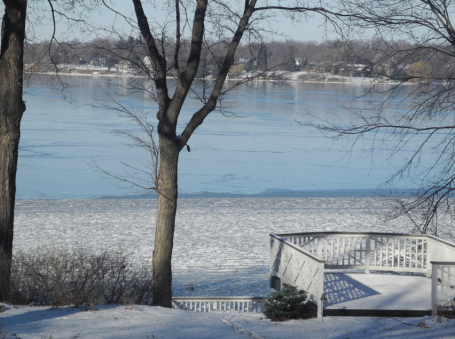
Latest Outlook A band of heavy snow setting up over central, western and northern Minnesota? Once again MSP will be on the fringe of a "plowable" snow event, a couple inches locally, but some 4-8" amounts possible north/west of St. Cloud toward Brainerd, Bemidji and Duluth.
Winter Weather Advisory Metro - Warnings West. The NWS has upgraded the winter storm watch to a warning for St. Cloud, Willmar, Alexandria and Fergus Falls, where more than 6-8" snow is expected. Precipitation will start as rain in the metro with a changeover to snow overnight, a couple inches by Tuesday morning at MSP, probably winding up in the 1-3" range, with some 3-6" amounts still possible far western suburbs of Minneapolis.
More on Tuesday's storm potential below....
"Paul's Favorite Things"
O.K. I'm no Oprah, but it's probably no secret I'm a technophile, gadget-freak and dreamer - I love technology, especially digital tools that help you become more confident, creative and prolific. I've had a serious addiction to megabytes, megapixels and smart phones ever since I launched EarthWatch in 1989 (3-D weather graphics for TV stations around the world). Then came Digital Cyclone, back in 2000 - the first company to put an app on a cell phone (black and white Doppler on a Nextel mobile phone in 2001) and ever since I've tried a lot of different smart phones, in search of the "perfect" device. Yes, technology was supposed to "set us free", when in fact it's turned us into a society of dazed, sleep-walking, multi-tasking cyborgs - half human, half digital, perpetually distracted.
Here are the devices that have brought some small measure of digital joy to my life in recent years. The reality: all these picks are highly subjective. I realize that, and don't believe I have any special powers of discerning what is the "best" in each category. Everyone is going to have their own opinions & preferences, based on their individual needs and experiences. But over the years enough people have come up and asked, "Paul, what do you use?" that I thought I'd include this in my blog, for better or worse. The weather is quiet, so why not?
1).
iPhone 4. Am I an Apple fanboy? Perhaps. Guilty as charged. In spite of Steve Jobs' "walled garden" approach and a desire for Apple to control every aspect of my content experience, I admire Apple for elegant design and near-flawless execution. The iPhone 4 is the one device I probably can't live without - it can do everything: e-mail, texts, apps, reasonable photos and video clips (when I forget to bring a dedicated camera), and it even makes decent phone calls - although like everyone else I've had my fair share of dropped calls (thank you AT&T). FaceTime is pretty amazing, although the need for the other party to also have an iPhone 4 (and a WIFI connection) is a bit of a drag. Multitasking finally brings the 4 to the level of Android, and the app market is far better (in my humble opinion). By the way, there are something like 2,000 FREE weather apps available, so making $$ by selling weather subscriptions has never been more difficult. It's not perfect - no device is, but it comes as close as anything I've tried (and I have a drawer full of old, discarded cell phones to prove it).
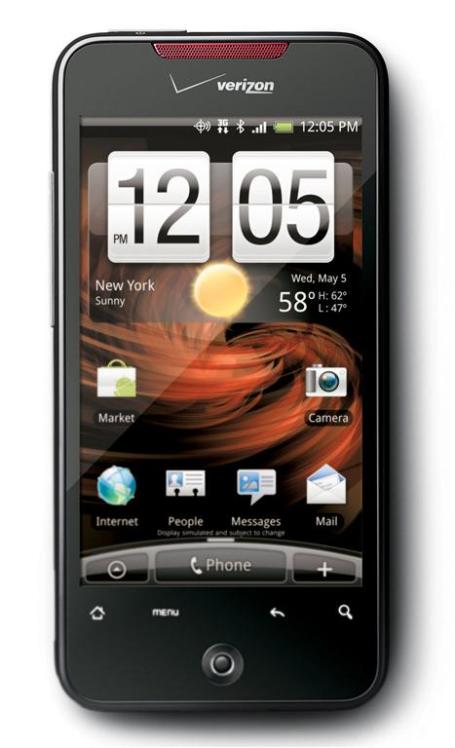
*
Honorable mention:
HTC Incredible. Don't get me wrong, I am impressed with Android, and I'm just geeky enough to walk around with 2 smart phones (one in each pocket - good thing I'm not trying to have any more kids). My one complaint: the app market for Android is still a kluge - there are a lot of (crappy) apps in there that have no business being available - you can easily spend good money on bad apps. I'm amazed how many big media brands have been hijacked by individuals who charge good money to (in essence) rip off their content. Yes, Android is more democratic, there is no walled garden, but the downside is that you have to be VERY careful when you download apps to make sure they're from trusted sources.
2).
iPad. Yes, I love my iPad. All my favorite laptop bookmarks can be accessed, along with iPad friendly apps, like Flipboard (pulls in your Twitter and Facebook accounts and presents your friend's posts/tweets in a novel way, almost like a personalized, contantly-updating diary). Other amazing apps include ABC, Netflix, the New York Times and Wall Street Journal, Pandora, Sling Player and Informant HD - a great way to synch your calendar entries, no matter what device you're using. The iPad is great for sharing photos with loved ones while sitting on the couch, the e-mail Safari client pulls in all your e-mail accounts and now you can listen to your iPod music library while you're working on other stuff. Apple is changing the way we consume content, and the iPad is a sign of (great) things to come as we move quickly into a personalized, content-on-demand world. In the future we'll be accessing more of our favorites from the "cloud", less purchased/stored content kept on our devices. Rent vs. buy. With media it probably makes sense. I can watch my Apple library of photos and videos on my main, family room TV (using "Home Sharing" on my iMac). The latest software upgrade includes "Air Play", which allows you to control your TV from your iPad. Call me crazy, but I think this is an exciting new frontier -
the interface between laptop media and what you watch (and personalize) on the tube. Television has always been a dumb box, a one-way flow of content. But now, with the inevitable marriage of TV and Internet, you'll be able to interact with favorite TV programs, leave messages, instant polls, etc - in a way we can't even begin to imagine.
*
Honorable mention:
Apple iMac. All my personal media (photos, movies, music) is stored on a 1 terrabyte iMac in my study. If the home was on fire this is probably the one digital device I'd try to rescue first - although I have backed up all my stuff using Hitachi's
LifeStudio backup AND
Carbonite, an on-line back-up service that automatically copies all your content and media in the cloud. I've learned the hard way - you can't have enough back up.
3).
Sony Vaio Laptop. Again, highly subjective, but I've never had serious issues with any of my Vaio laptops. They're well-built, virtually indestructible, and highly reliable. In fact the
Sony laptop I'm writing this post on has been my main, go-to laptop for 2 years, which for me is an eternity. For the longest time I would upgrade to a new laptop every year, in search of ever more RAM and storage, but starting from scratch (with a new laptop), adding all your programs and media can be a huge hassle, so I'm trying to slow down and not be quite so impulsive.
*
Honorable mention:
Apple Macbook Pro. When it comes to family memories, storing photos, videos and favorite music, nothing beats a
Mac. The Vaio may be my everyday workhorse (mainly because it runs a few Doppler radar programs that only work in a PC universe) but Apple has done a masterful job of allowing consumers to safely store and manipulate their personal memories. For ease of use there is still nothing to compare with iPhoto and iMovie. I use Adobe Photoshop and Final Cut Pro, but 90% of the time iMovie and iPhoto is enough.
4).
DirecTV. I have cable TV throughout the house (Mediacom) but I'm absolutely sold on my family room DirecTV. Not only can I watch and DVR favorite shows in HD, the "Sunday Ticket" allows me to watch any NFL game around the country for a few hundred bucks every year. If you're a football fanatic there's nothing better than watching the "Red Zone" channel. All action, no commercials - the way football was meant to be watched.
DirecTV examines the shows you watch and recommends new shows, based on your viewing habits, which is a helpful feature. True, when it rains or snows hard the signal can fade (that happens once or twice a year), but day in and day out, I'm continually impressed with this service - a lot of entertainment bang for the buck.
*
Honorable mention:
Ivy TV. Say what? I stumbled upon this little-known service about a month ago. A small start-up in Seattle is providing network TV stations (from Seattle, New York and Los Angeles) via high-speed Internet on your PC, Mac or laptop, for about $4/month. You can even watch my buddy, Paul Magers, on KCBS-TV in Los Angeles. No TV in the office? Not a problem. With Ivy you can watch (even record, like a DVR) on your computer, 24/7). The networks are trying hard to shut this company down, but Ivy TV claims they are permitted to do this (legally) using the Copyright Act. I don't pretend to understand the legal implications - but some of that $4/month is going back to these stations for rights. Not sure it'll make it, but if you want to watch that favorite show on your computer, anytime, anywhere - there's nothing like
Ivy TV.
5).
Netflix (streaming). So much for DVDs. They just went the way of LP's and 8 Track Tapes. For $8/month you can access unlimited movies, on your schedule, directly on your TV set. All you need is high-speed internet and a hardware device that enables Netflix (like Apple TV, Roku, or some Blu-Ray players). Some new TV's have Netflix built right into the hardware. On any given evening 20-25% of the Internet bandwidth is people streaming Netflix movies. It's changing the way people are consuming media in this country - and if you don't have
Netflix, you're missing something truly extraordinary. The company is moving away from (expensive) DVD's by mail, it's actually cheaper going with the on-demand streaming than renting DVD's. Trust me, it's easy - and once you try it you'll be hooked. Forever.
6).
Roku. For less than $70 (one-time charge) you can hook up a little Roku device (about the size of a hockey puck) that allows you to pull in hundreds of new channels, some free, some premium. It also gives you access to Netflix streaming. If you love to watch EVERY Twins game you can tap into MLB.com and never miss an inning of play. For that price you can almost put a
Roku device in every bedroom. But think twice (if you want your kids to ever do their homework again).
7).
Apple TV. The new, improved Apple TV is one big step closer to the Holy Grail of personalized TV. Not only can you stream Netflix, YouTube, Flickr - you can tap hundreds of free radio stations, podcasts, call up a TV episode or movie you missed (using iTunes). But best of all (for me) - you can watch a slideshow of that last vacation, all your photos and video clips in glorious HD for the entire family to gawk at.
Apple TV costs under $100, and it's a worthy addition to your family room entertainment system.
8).
Nikon Coolpix P7000. I have a serious problem with digital cameras. I love the power of DSLR's, but I don't enjoy lugging around 30 pounds worth of camera bodies and lenses everywhere I go. It turns a vacation into one long, back-breaking workout. For many years now I've been on a quest to find the "perfect" camera, one powerful enough to capture close-up zooms, HD-quality video and yet
small enough to fit in my pants pocket. I've tried a lot of cameras, including Lumix (very good), the Canon G10, the Canon Powershot S95 and the Sony Cyber-Shot - all of them extraordinary cameras. But this
Nikon is the closest I've found to having a DSLR in your pocket. You can even shoot RAW photos (if you don't mind a 2-3 second lag), but JPEG is quick, the quality is exceptional, and the video is spectacular. When you turn the camera on the zoom lense extends to 20X, other features like stability control and complete control over ISO, quality and white balance makes this camera a breeze to use. It's a lot of bang for the buck (retail price around $430 at Amazon) and it BARELY fits in your jeans pocket - so you don't have to look like a mega-dork with this dangling around your neck.
*
Honorable mention:
Sony Cyber-Shot DSC-HX5. 10X zoom, 10.2 megapixels, GPS (so you can remember exactly where you took that perfect portrait) and a great form factor that EASILY fits in your pocket or purse. The Nikon P7000 gives you a little more control over the ultimate photo, but you want to just put a camera on "auto" and have it with you (all the time - ready to go), you can't go wrong with the
Cyber-Shot. The
Canon PowerShot S95 and
Sony NEX-5 are both exceptional cameras - the Canon is smaller and more compact than the Nikon P7000 or the NEX-5, but packs a lot of bang for the buck. By the way,
www.dpreview.com is one of the best sites I've found on the web for camera reviews - exceptionally thorough.
9).
Garmin Nuvi. It's well known that guys HATE asking for directions. It's built into our DNA to be self-sufficient and impossibly stubborn. For that reason you might want to consider the
Nuvi, which is small enough that you can easily pack it away for vacations. No need to pay extra with Hertz or National - you can drop the Nuvi into your suitcase or purse and be ready to go when you reach your destination. Great features include finding nearby gas stations, restaurants and hotels - the latest generation even includes traffic obstacles between you and your destination.
* Honorable mention:
Google Maps. Yes, for convenience there is nothing better than using
Google Maps (on the web or smart phones) to find what you're looking for, calculate an instant route to that destination, even check traffic in-route. It's easy to use, yet powerful. It can be a little tricky trying to use your smart phone (and drive safely) - that's why a dedicated GPS system makes sense, especially if your job takes you to new, unfamiliar locations on a consistent basis.
10).
Davis Vantage Pro 2 Weather Station. No self-proclaimed weather geek would be complete without a back yard weather station. I've tried a few, and for my money the best bet is the
Davis Vantage Pro 2, which is durable, solar-powered, and highly reliable. Using your wireless home Internet you can keep a steady stream of data coming into any PC or Mac, log and track weather conditions over time, look at graphs of temperatures, pressure, winds - anything. It even has a tipping rain gauge that automatically empties out at the end of each day. If you're a true weather enthusiast consider putting up your own weather station. One perk: the data from my station is available to anyone on the Internet. Thousands of home weather enthusiasts make their data available, complimenting the NWS network of airports around the USA. Because when it comes to weather you can NEVER have too much data.
11).
Favorite App: RadarScope. For the iPhone operating system
RadarScope allows you to tap into any NOAA Doppler radar in the USA, checking reflectivity (rain, snow, hail) or radial velocity (evidence of rotation that coincides with severe hail and tornadoes). You can loop the radar - zoom in, and see (at a glance) any warnings that are in effect nearby. It's a powerful app. Forget the free weather apps - most of them are pretty useless. RadarScope costs $3.99 (one-time charge) but it's worth every penny. The next time you're on the football field or watching your kids play Little League baseball and the sky blackens you'll whip out RadarScope, see INSTANTLY where the storms are going, and be the hero in the stands that everyone turns to for spontaneous weather updates. A dream come true, huh?
*
Honorable mention:
"My-Cast." It was a toss-up between RadarScope and
My-Cast, from Digital Cyclone, a division of Garmin. I'm a little biased, since my friend, Craig Burfeind and I started up Digital Cyclone back in 1999. My-Cast is an amazing app, available on every cell phone imaginable. My-Cast OneLook is a great consumer app with a lot of functionality - you can store your favorite locations, see (at a glance) if severe weather watches, warnings or advisories are nearby, even get an hour-by-hour forecast. If you want to go all out consider
Pilot My-Cast, even if you're not a pilot. The advantage: Pilot My-Cast has much higher-resolution data for the USA, you can zoom into any city and get amazing detail nearby, NEXRAD Doppler, 1 km. visible GOES cloud imagery, and lightning loops (which can really save your butt if you're on the golf course or the middle of Mille Lacs).
*
Honorable mention 2:
Qik. These days everyone is a content creator. From blogs to tweets to FB posts, we spend as much or more time CREATING content as we do consuming media. If you don't have
Qik (free, both Apple and Android OS) you're missing something extraordinary. You can send back live video of your event, anywhere you can get a cell signal, and your friends/families can watch your event (live) on a special, secure web site URL. It's like having your own personal TV network. If your kid plays sports, or you want to beam back live video of a breaking news event, there is nothing quite like Qik. UStream Broadcaster is a similar, both are tapping into something pretty revolutionary. The days when the networks covered "the news" with expensive cameras and journalists are fading - we're moving quickly into an era of true citizen journalists - when millions of Americans will document what's happening right in front of them, and transmit it (live) to the rest of the world. No filter. No editorializing or slant. Just the (real) news.
12).
Squeezebox Radio. Internet-enabled radio, why would I consider such a thing? I grew up out east, and don't miss much EXCEPT for a few classic rock and news/talk radio stations. Now, instead of fumbling around with web sites I can turn on my "
Squeezebox", hit a preset, and instantly hear WTOP-AM in Washington D.C. or "The Rose", serving south central PA. Many of us are from somewhere else - and with the Squeezebox you can stay connected like never before.
13).
Favorite Browser: Firefox. O.K. It still crashes every now and then on me (especially when I have dozens of tabs opened up from articles I want to read - all at once!) But Firefox is generally reliable and powerful, you can personalize it with favorite "plug-ins" that make the browser even more powerful. I've tried Internet Explorer and Google's Chrome, but keep coming back to (free) Firefox. Download Firefox for free from Mozilla
here.
14).
Favorite (PC) Doppler Radar Program: GR2Analyst. TV stations routinely spend over $1 million to set up their own live Doppler radars, powerful enough to not only track raindrops, snowflakes and hail stones, but able to see what direction those targets are moving, searching for regions of rapidly rotating air that may be ripe for tornado formation. Now, for only $250 (one-time charge for a personal license, but you can try it free for 21 days) you can dial up any NOAA Doppler site in the USA and see the raw data for yourself. No, it's not "live", it's delayed by 2-4 minutes, but GR2Analyst is incredibly powerful. We use it on and off the air at WeatherNation, and if you REALLY enjoy the weather, especially severe weather, you can't go wrong with this program. It's PC-compatible - I have yet to get it to run (reliably) on a Mac, because the program takes advantage of Direct-X with it's volumetric scans, and even with emulation (Boot Camp, VM Ware) the Mac has trouble keeping up. All the radar images I use on the blog are created using
GR2Analyst.
15).
Favorite Photo Library Tool: iPhoto. Simply plug your digital camera into the USB port of your Mac and the photos automatically upload into iPhoto. From there you can adjust, crop and rotate your photos, e-mail them to friends and family, or burn DVD's for safe-keeping. Apple makes it easy with
iPhoto, and with iLife you can even search for specific "Faces" and categorize your photo library accordingly (ie. keep all the photos of Aunt Mary, Uncle Ned, your favorite nephew or niece, etc). Pretty cool.
*
Honorable mention:
Picasa 3. Google provides a terrific (free) tool for photo management with Picasa. This is a great alternative for the PC world, and permits you to tweak your favorite photos and store them, chronologically. I usually back up my photos with both iPhoto and Picasa. You can replace a lot of things, but family photos are irreplaceable. It's a good idea to back them up in multiple places on multiple devices, including online back-up (favorite there is a program called "
Carbonite" - which automatically backs up all your photos, videos and documents into the cloud when you're sleeping). Not bad for about $5/month. Download Picasa 3 for free by clicking
here, versions available for PC and Mac.
** To learn more about the
Paul Douglas Foundation and make arrangements for Paul to speak to your company or service organization click
here.
My (Most) Favorite Things. Of course, like you, this past week I've been giving thanks for so many things, especially the amazing people in my life, including my wife and sons, my parents, sister and brother, my friends & colleagues at
WeatherNation,
Smart Energy and
Singular Logic - my good friend and amazing business partner, Todd Frostad and my faith. It's been a challenging couple of years, but in the end it all comes down to the people you surround yourself with. If you've been blessed with great people on your team - you at least have a chance.
So there you have it - more than you ever wanted to know about PD's digital urges and proclivities. Yes, I probably spend too much time thinking about this stuff. And I rationalize much of it by saying "what's more important than family memories?" Dangerous turf, I know. Let me also state (for the record) that nothing digital will ever bring you true happiness and satisfaction, the way a good friendship or family encounter, or time spent with your parents, will ever accomplish. These are nothing but "toys" for grown-ups. My wife calls them gadgets. I prefer to think of them as "productivity devices." A great digital device should help you document your life and make you more productive. Nothing more.
Good luck with your holiday shopping list. Hope you find what you're searching for.
* PS. No, I'm not getting a "spiff" or commission from any of these companies. They could frankly care less what I think, anyway. But Oprah's "favorite things" episode (as crazy-extravagant as it was) inspired me to a). live my best life (right), and b). waste the better part of a holiday weekend documenting my digital hits and misses, so a few of you might not make the same
expensive mistakes I did. With tech (and weather), it's all about learning from your mistakes. Trial and error. A painful, humbling learning curve.
Now, more on the potential for significant snow Tuesday:
The Big Dip. The good news: it won't be as cold as Thanksgiving Day, which felt like something out of late January. But after a mild Sunday temperatures will fall off by midweek, bottoming out Wednesday before recovering (slightly) by the end of the week.
Place Your Bets. No, it won't be "Snowmageddon", but Tuesday will probably be a snowy, slippery mess, with temperatures falling through the 20s - the lowest mile of the atmosphere cold enough for all snow. The latest NAM model prints out closer to .23", implying a couple inches in the Twin Cities, but some 6"+ amounts are possible north and west of St. Cloud by Tuesday afternoon.
Projected Track. The forecast storm track brings the area of low pressure into southern MN - leaving me (a little) concerned about enough warm air surging north for a mix of rain/snow Monday night into the early morning hours. That may bring final snowfall amounts down a bit, but by breakfast Tuesday the atmosphere SHOULD be cold enough for all snow.
A Convergence Of Factors? The latest "BUFKIT" analysis of the storm shows a number of factors combining which may increase the potential for heavy wet snow: strong upward motion (between midnight Monday night and 6 am Tuesday), in addition to favorable "omega" (snow growth favors dendritic crystals) and the -10 C isotherm at about 10,000 feet. Once again there may be a 4-6 hour "burst" of heavier snow, best chance Monday night and morning hours Tuesday, with snow gradually tapering off by Tuesday afternoon/evening. The heaviest snow amounts pile up over far western and northern MN, but parts of central MN may pick up as much as 4-8" as well.
Changeover. BUFKIT future sounding data shows the atmosphere overhead warm enough for rain up until 6 or 7 pm Monday evening, with a rapid changeover to snow Monday night. Right now it looks like the brunt of the upward motion/heavy precipitation is forecast to take place in an environment cold enough for snow.
Misery Loves Company. Severe weather warnings have been issued for Scotland, Ireland and much of the U.K. (including London) for heavy snow and high winds. Sections of Northumberland have already picked up 15-18" of snow with blizzard conditions. YouTube footage of near-blizzard conditions in Glasgow, Scotland is
here. More on the wild wintry weather regime gripping the British Isles from
Sky TV.
A Whole 'Lotta Lightning. According to Vaisala (which tracks global lightning strikes using their own, proprietary lightning network and Accu Weather's Jesse Ferrell), planet Earth was struck by cloud to ground lightning nearly 310 MILLION times in just a 6 month period earlier this year. The dark purple region shows counties struck 32 times/20 kilometers - Iowa saw more lightning strikes than Florida, which is highly unusual. The story is
here.
Wave Goodbye To Warmth. 45 Sunday in the Twin Cities? Admit it - it felt pretty good out there. 47 F. in Rochester, 43 in St. Cloud, even Duluth saw 35. The mercury may eclipse 40 today before tumbling through the 20s Tuesday as a reality front returns to Minnesota.
Could Be Worse. Somewhere in North Dakota. 1940s - snow drifts reach 15-20 feet above the road, creating an unlikely photo-op.
Paul's Conservation MN Outlook for the Twin Cities and all of Minnesota:
MONDAY: Mild, light rain developing late. Wet roads - no travel problems expected. SE 10. High: near 40
MONDAY NIGHT: Advisory Metro - Warnings Western/Northern MN. Rain quickly changes to wet snow - 1-2 inches by breakfast Tuesday? Low: 23
TUESDAY: "Plowable" snow, 1-3" snow totals possible (less east metro, more far west metro, where some 3-6" are possible). Travel will be quite difficult. High: 24
WEDNESDAY: Sun returns better travel statewide. Chilly with less wind. High: 23
THURSDAY: Mostly cloudy, flurries west. High: 24
FRIDAY: Clouds increase, still quiet. High: 27
SATURDAY: A bit milder with flurries, steadier snow north (couple inches from Bemidji to Duluth?) High: 30
SUNDAY: Some sun, better travel day of the weekend. High: 28
2010: One Crazy Year
Let's review: 2010 is eclipsing 1998 for the warmest year on record worldwide. 19 nations set records for the hottest temperatures ever recorded, the most ever in a year. Russia endured a 1 in 100 year heat wave and drought. Tornadoes were spotted above New York City. Memphis suffered through a 1 in 500 year flood. In September 135 daily rainfall records were broken out east.
According to Newsweek and NOAA 153 of America's 1218 weather stations saw the hottest summer since 1895. Minnesota's 28.21" Landicane" in late October set a new record low pressure between the coasts. Coincidence? Perhaps. America's weather has always been extreme, but this year has been remarkable, our weather on steroids.
More water vapor floating overhead is sparking more floods and heavier winter snowfall; looks like yet another cold, crystalline "taste" this week. Models are hinting at 1-3" Tuesday for the metro, enough to shovel and plow? Over half a foot may pile up over parts of central, western and northern MN. The farther north/west you travel away from the metro the worse travel conditions will be late tonight into Tuesday.
Check the blog for winter storm updates, along with (digital) holiday gift ideas as I unveil "Paul's Favorite Things". Sorry Oprah.
War Machines: Recruiting Robots For Combat. Are we getting closer to a world envision by the movie "The Terminator"? Don't laugh. First read this (amazing) New York Times
article that appeared in Sunday's edition. Robotic weaponry is getting sophisticated - some of these machine-gun-shooting, tear gas hurling devices are being deployed to Afghanistan as early as 2011. Where's Arnold Schwarzenneger when you need him? (Be sure to check out the multimedia
special that accompnaies this story). Science fiction is becoming reality, right before our eyes.
An Almanac Of Extreme Weather. Check out this
post from a farmer in Rushford, Minnesota - published in the New York Times. An excerpt: "
THE news from this Midwestern farm is not good. The past four years of heavy rains and flash flooding here in southern Minnesota have left me worried about the future of agriculture in America’s grain belt. For some time computer models of climate change have been predicting just these kinds of weather patterns, but seeing them unfold on our farm has been harrowing nonetheless. My family and I produce vegetables, hay and grain on 250 acres in one of the richest agricultural areas in the world. While our farm is not large by modern standards, its roots are deep in this region; my great-grandfather homesteaded about 80 miles from here in the late 1800s. He passed on a keen sensitivity to climate. His memoirs, self-published in the wake of the Dust Bowl of the 1930s, describe tornadoes, droughts and other extreme weather. But even he would be surprised by the erratic weather we have experienced in the last decade.
The weather in our area has become demonstrably more hostile to agriculture, and all signs are that this trend will continue. Minnesota’s state climatologist, Jim Zandlo, has concluded that no fewer than three “thousand-year rains” have occurred in the past seven years in our part of the state."
Optimizing Large Wind Farms. Renewable sources of energy (solar, wind, geothermal) are in trouble, at least in the short term. The problem: natural gas is cheaper than energy generated via all of the above, and until the economics of renewable energy improves, it's going to be an uphill fight. But wind farms can be part of the larger equation. Some of the challenge is optimizing what's already in place. According to an
article in Science Daily: "
Wind farms around the world are large and getting larger. Arranging thousands of wind turbines across many miles of land requires new tools that can balance cost and efficiency to provide the most energy for the buck. Charles Meneveau, who studies fluid dynamics at Johns Hopkins University, and his collaborator Johan Meyers from Leuven University in Belgium, have developed a model to calculate the optimal spacing of turbines for the very large wind farms of the future. Theyl presented their work November 23 at the American Physical Society Division of Fluid Dynamics (DFD) meeting in Long Beach, CA. "The optimal spacing between individual wind turbines is actually a little farther apart than what people use these days," said Meneveau.
Global Warming Slows Down - Thanks To More Pollution In The Atmosphere. Just when you think you've seen everything along comes an eye-opening story in the Vancouver Sun. We're pumping more greenhouse gases into the atmosphere than ever, but an increase in particulant pollution (from more cars, trucks, industries, especially China and India) is slowing the rate of warming. From the
article: "
Global warming has slowed in the past decade, figures from Britain's meteorological office suggest. The world is pumping out so much pollution it is reflecting more of the sun's rays and thus constraining heating by the sun. The latest figures from more than 20 scientific institutions around the world show that temperatures are higher than ever. However, the gradual rise in temperatures over the past 30 years is slowing slightly. Global warming since the 1970s has been 0.16 C per decade but the rise in the past decade was just 0.05 C."
* Every week over half a billion TONS of carbon dioxide are released into the atmosphere worldwide.
"We Need A Discussion On Global Warming". Click
here to read an editorial that really summed up the quandary for me. Here's a conservative trying to approach the subject logically, rationally. I think he makes a few good points.
To Fight Climate Change, Clear The Air. The authors of
this New York Times editorial argue that reducing soot, "HFCs" and methane (25 times stronger than carbon dioxide) may be easier (and more politically acceptable) than making substantive reductions in carbon dioxide.
On Global Warming, Start Small. Bruce Usher of the Columbia Business School,
argues that the states are doing what nations cannot. Forget about a government-mandated "top-down" approach. Tee up a "bottom-up" strategy that gets results at a local/state level, and then expand and share best-practices on a global scale. Makes sense to me.
Best Star-Gazing On Earth? Are you an astronomy buff? No? I'm fascinated by the nighttime sky, which raises more questions than answers - even tried to teach astronomy merit badge for a group of (very patient) boy scouts. It turns out Antarctic is not only the coldest spot on Earth, but the driest, clearest and calmest, with the least "weather" to get in the way of tracking celestial targets. More from the U.K.'s Guardian Newspaper
here.
Case For Man-Made Warming Increased in 2010, Scientists Say. I know, it's all very confusing. "How can the Earth be warming up if I'm shivering uncontrollably right now?" It's easy to confuse "weather" with "climate". From a CNN
article: "
The UK's Met Office Hadley Center says data from a range of climate indicators continues to make an "overwhelming" case for long-term man-made global warming. "It is clear from the observational evidence across a wide range of indicators that the world is warming," Matt Palmer, an oceans expert at the Met Office, said in a statement. "As well as a clear increase in air temperature observed above both the land and sea we see observations which are all consistent with increasing greenhouse gases." The Met Office brought together evidence from over 20 institutions worldwide -- including NOAA's National Climatic Data Center and NASA -- in making its assessment."

A Climate "Whodunit". So there's no way to (scientifically) connect the dots and link 2010's (frequent and oftentimes bizarre) weather outbreaks to a warming climate? From a
blog at Newsweek: "
You mean you guys can’t definitely say human-caused climate change is why 135 daily rainfall records were broken along the East Coast during September’s deluges (Wilmington, N.C.: 19.7 inches over three days)? You can’t say climate change is why 2010 is eclipsing 1998 as the hottest year on record, or why in August an ice island four times the size of Manhattan broke off from a Greenland glacier? How about why 2000–09 was the warmest decade on record, that 153 of the 1,218 U.S. weather stations recorded their hottest summer since 1895, why Moscow suffered a once-in-centuries heat wave this summer, or why one fifth of Pakistan flooded?"



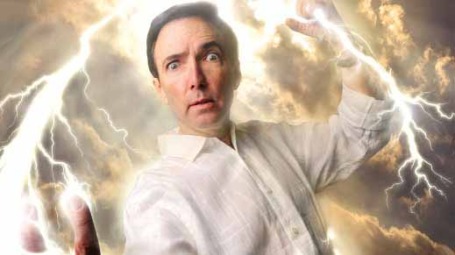
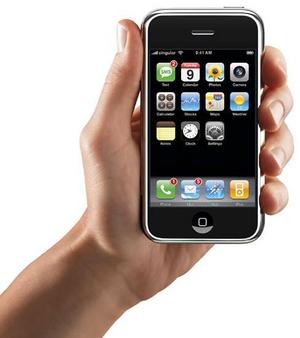


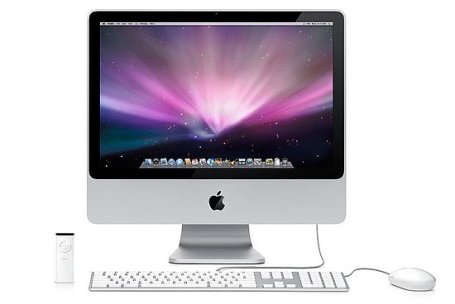

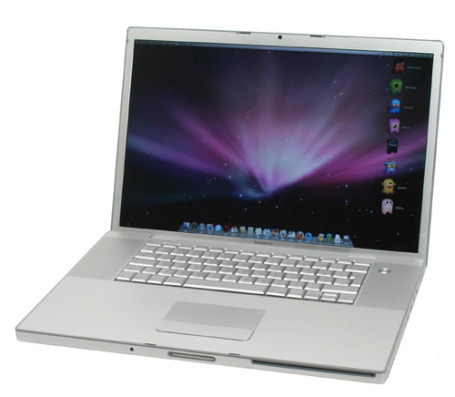


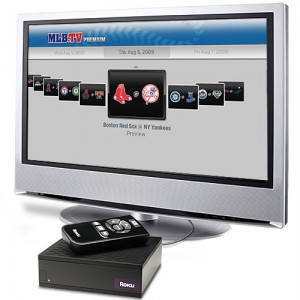

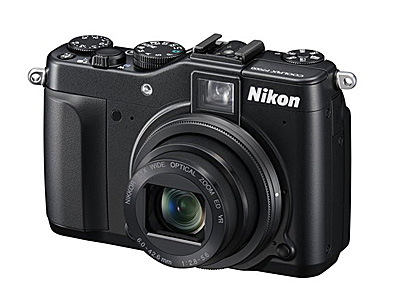
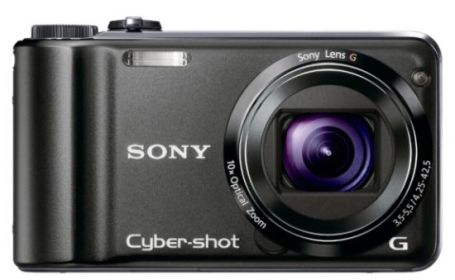
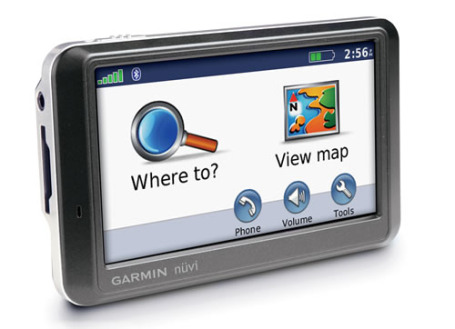
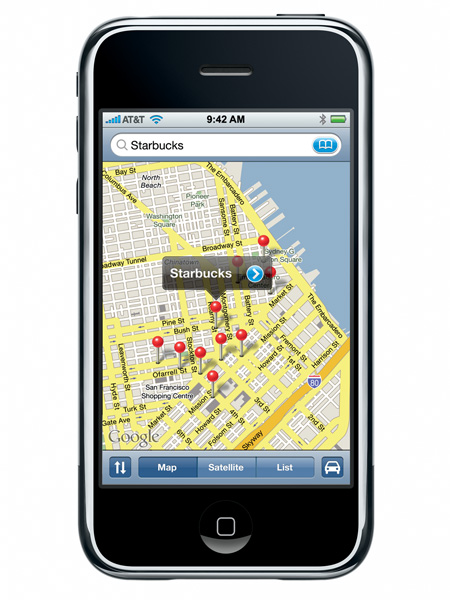
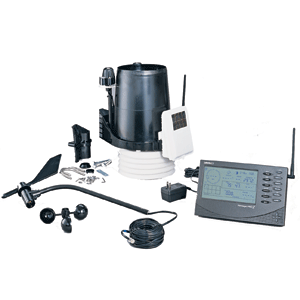

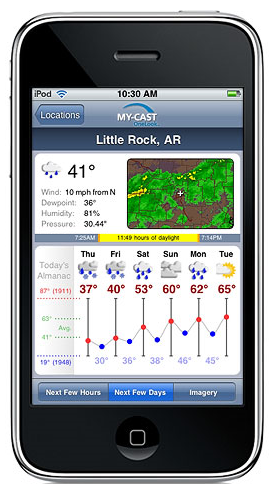
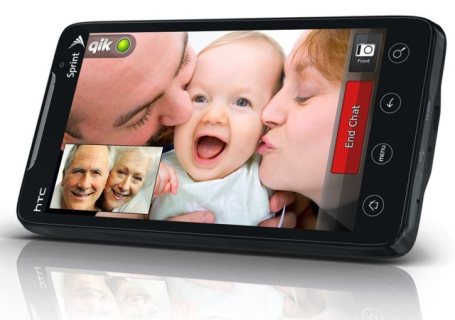


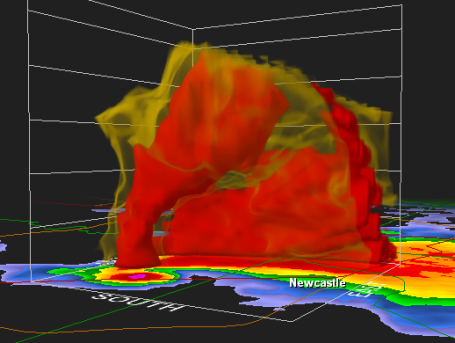
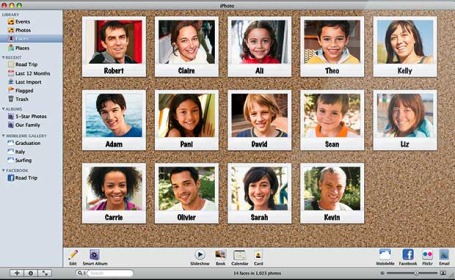
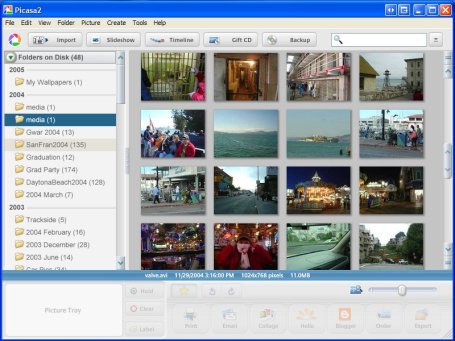

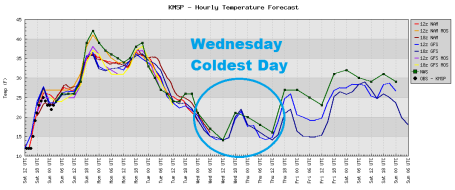
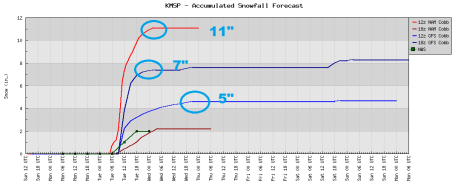
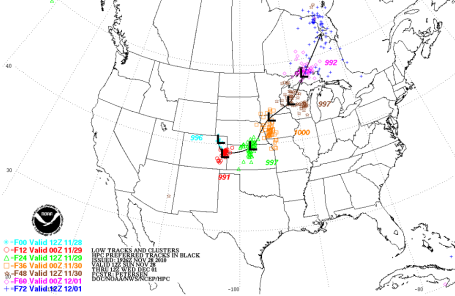
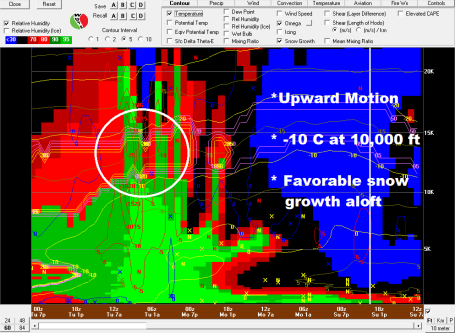
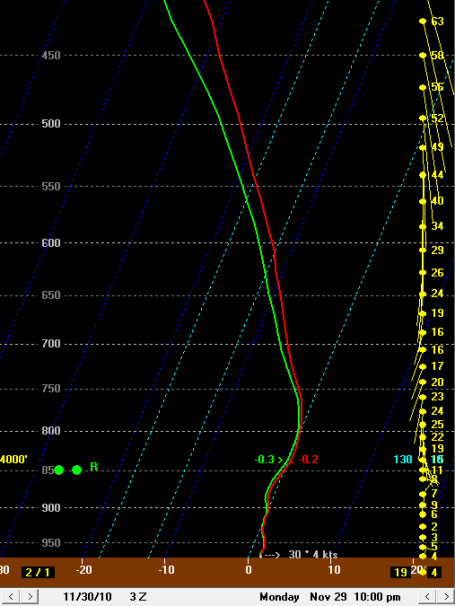


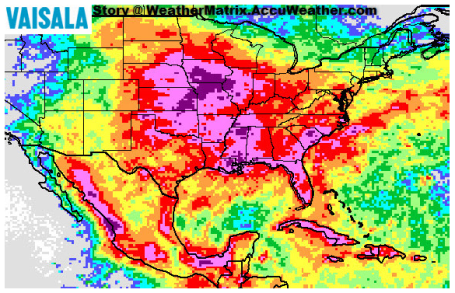
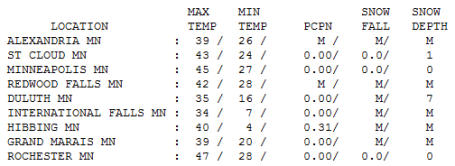
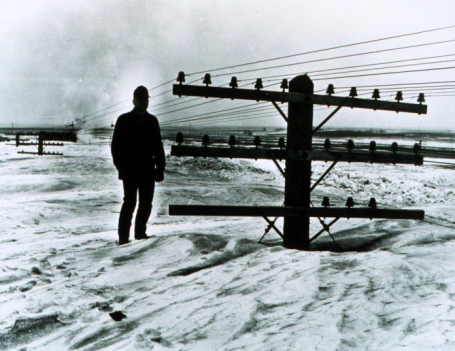
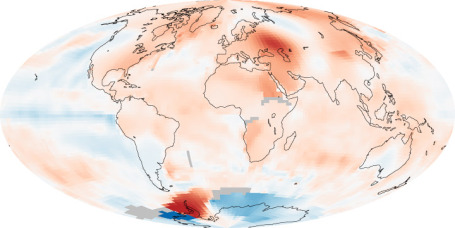

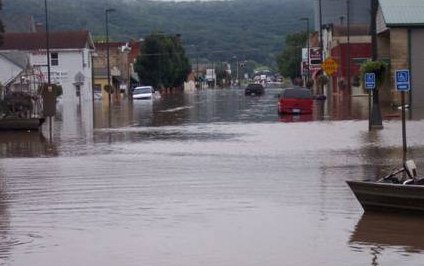
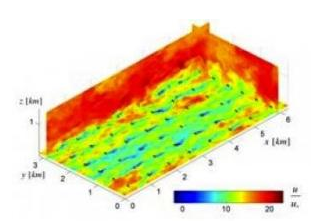

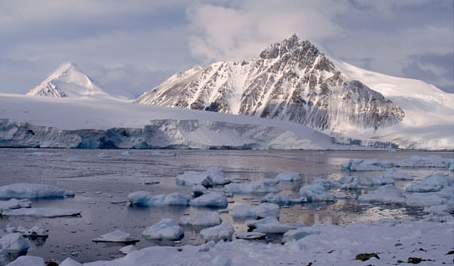


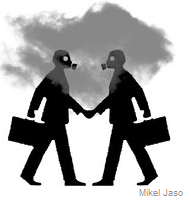
No comments:
Post a Comment